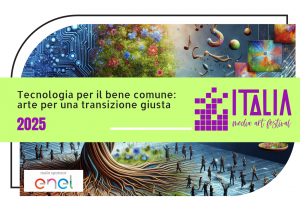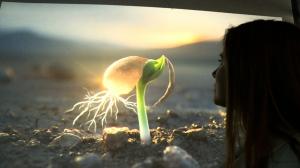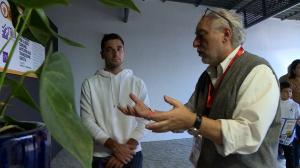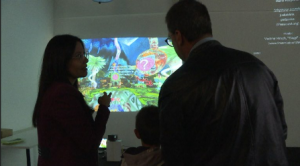Italy Media Art Festival 2025 Presents Its Special Screening at Rome Art Week, October 22

The 2025 edition explores the theme “Technology for the Common Good: Art for a Just Transition,” inviting artists and audiences to reflect on the conscious use of technological innovation as a tool for equity, inclusion, and sustainability.
Italy Media Art Festival 2025 closes in Rome with a special screening at Rome Art Week, exploring ethics, sustainability, and digital innovation through art.
ROME, ROME, ITALY, October 21, 2025 /EINPresswire.com/ -- After its premiere in Cyprus, as part of Cyprus Art Week (September 30 – October 5), and following the great success achieved at Maker Faire Rome – The European Edition (October 17–19), where hundreds of visitors discovered the selected works and engaged with leading video artists, the Italy Media Art Festival (IMAF) is preparing for its final event in the Italian capital: the Special Screening 2025, to be held on October 22 at 5:00 p.m. in the Sala Consiliare of Palazzo Valentini (Via IV Novembre 119/a), within the framework of Rome Art Week (RAW).The festival, conceived and directed by journalist Marinellys Tremamunno, with the support of Massimiliano Padovan di Benedetto, President of RAW, was established as an international and free platform dedicated to promoting video art and emerging technologies, with the goal of fostering social and ethical reflection through digital creativity.
The 2025 edition explores the theme “Technology for the Common Good: Art for a Just Transition,” inviting artists and audiences to reflect on the conscious use of technological innovation as a tool for equity, inclusion, and sustainability.
From more than 80 submissions received from around the world, a jury of experts selected nine works (seven video art pieces and two video installations) that offer a global overview of new digital aesthetics and the relationships between humanity, the environment, and technology.
During the October 22 event, a selection of videos will be screened, giving the public and the press an overview of the curatorial direction of the 2025 edition. Institutional and art world representatives will attend, including Hon. Massimo Ferrarini (Councilor of the Metropolitan City of Rome), Hon. Chiara Iannarelli (Councilor of the Lazio Region), Massimiliano Padovan di Benedetto (President of Rome Art Week), as well as the selected artists Bruno Cerboni and Claudio Marani.
Moderated by Marinellys Tremamunno, the event will also serve as a forum for dialogue and exchange on the challenges and opportunities that media art offers in the contemporary context, promoting a bridge between technological innovation and social responsibility.
Selected Works
Among the video art works are:
“Chtonia – A Story Beyond Anthropocene” by Marco Calabrese (Italy),
“A Hungry Artist” by Marco Caridad (Venezuela),
“The Collective Laboratory” by Bruno Cerboni (Italy),
“Echoed in Water” by Yossi Galanti (Israel),
“Thoughtscapes” by Affar Oppip (Brazil),
“The Stream XII-II” by Hiroya Sakurai (Japan), and
“Connections #2: Human – Machine” by Maurizio Zoccola (Italy) —
works that explore the intersections between humanity, technology, memory, and sustainability through powerful and symbolically rich visual poetics.
The selected video installations, “The Garden” by Jérémy Griffaud (France) and “Dialoghi con Flora” by Claudio Marani (Italy), expand the dialogue between nature and artifice, inviting the viewer to experience an immersive and sensorial journey.
Completing the program are the guest artists: Oksana Mas (Ukraine), Mariia Plekhova (Russia), Maria Korporal (Germany), Citron | Lunardi (Italy), Emanuele Marsigliotti (Italy), and Pedro Morales (France) — artists who, through poetic and speculative visions, explore themes of ecology and spirituality.
The festival is held under the patronage of the Metropolitan City of Rome Capital and supported by Enel, main sponsor of the 2025 edition, as well as in collaboration with Rome Art Week (RAW).
DETAILED LIST OF SELECTED WORKS 2025 – VIDEO ART
(in alphabetical order)
Chtonia – A Story Beyond Anthropocene
by Marco Calabrese (Rome, Italy) – 4:00 min
Chtonia emerges from the encounter between artificial intelligence and biological imagination. Set in a future marked by deserts and surviving laboratories, it tells the story of an AI programmed to protect human DNA that resurfaces after a long silence, assuming identities and bodies inspired by jellyfish, fungi, and tardigrades. No longer a mere algorithm, Chtonia chooses coexistence with other species and embraces a fluid, modular body—far from domination. With a visual language indebted to science fiction yet rooted in materials related to soft robotics and natural systems, the film constructs a speculative world-building exercise that raises questions about climate and social justice in a post-anthropocentric world.
A Hungry Artist
by Marco Caridad (Caracas, Venezuela) – 2:57 min
A Hungry Artist is a video performance reflecting on hunger as a metaphor for the insatiable desire for voice, justice, and belonging. A doll bearing the artist’s face—but without a mouth—sits at a table to “eat” emptiness, while its arms, extensions of the same body, perform an impossible ritual: feeding on absence. The work expresses the vulnerability of the contemporary artist and confronts global dilemmas of social and climate justice, exposing contradictions between technological progress and social exclusion. Through irony and poetry, it becomes a mirror of our collective hunger for equity, clean energy, and the ethical use of artificial intelligence.
The Collective Laboratory
by Bruno Cerboni (Rome, Italy) – 4:30 min
The Collective Laboratory is a visionary journey into a future where technology, art, and social justice converge in harmony. Set in an imaginary lab outside time and space, the work shows how collaborative innovation becomes a catalyst for a fair transition toward sustainability. Through AI-generated imagery, it explores scenarios of energy, architecture, and landscapes transformed by principles of equity and inclusion—from solar panels turned into murals illuminating favelas to electrical grids tracing sacred geometries. The piece challenges the conventional narrative of ecological transition, offering a holistic vision where technological progress, social justice, and environmental sustainability are inseparable.
Echoed in Water
by Yossi Galanti (Jerusalem, Israel) – 2:25 min
Echoed in Water reinterprets the 15th-century Flemish painting Saint Elizabeth’s Day Flood as both a historical trauma and a contemporary omen. Combining AI-generated frames inspired by the painting with modern footage, the film collapses time: Gothic churches coexist with skyscrapers, androids row through flooded villages, and muddy waters submerge both ancient and modern cities. Through unsettling juxtapositions, it reflects on the recurring violence of human-caused climate disasters and questions the myth of technological progress. The medieval past becomes a mirror for present anxieties, as the work unfolds as a visual meditation on fragility, memory, and resilience—like water, history always returns.
Thoughtscapes
by Affar Oppip (São Paulo, Brazil) – 3:35 min
Thoughtscapes transforms the private inner life into a shared experience. Using a GAN (Generative Adversarial Network), the artist generates a flow of mutable images evoking thoughts, memories, fears, and dreams—states usually impossible to visualize. Several frames derive from works created during a psychiatric hospitalization in 2021, adding an intimate, autobiographical layer to the generative process. By interrupting and guiding the algorithm instead of letting it act autonomously, the work emphasizes human intentionality within the machine, offering a poetic and personal reflection on the intersection between fragility and artificial intelligence.
The Stream XII-II
by Hiroya Sakurai (Uji, Japan) – 4:56 min
The Stream XII-II explores the relationship between human activity and nature, focusing on the beauty of transformation processes as a kind of visual ballet. The film documents the burning of cane fields—a gesture that produces carbon dioxide but is compensated by the absorption of new spring vegetation, rendering the process carbon neutral. The work celebrates cyclicality and balance between destruction and rebirth, inviting the viewer to contemplate the aesthetic and sustainable dimensions of the interaction between humanity and the environment.
Connections #2: Human – Machine
by Maurizio Zoccola (Naples, Italy) – 3:57 min
Connections #2: Human – Machine is the second chapter of a trilogy exploring different forms of interaction between humans and technology. In this phase, the boundary between the human and the artificial dissolves, giving rise to a creative dialogue with artificial intelligence as an autonomous agent. Through glitch art and a fusion of orchestral and electronic music, the multimedia production reveals a process of mutual influence—where AI does not replace the artist but amplifies expressive possibilities. The musical component, combining acoustic instruments and electronic timbres generated in Pure Data, reinforces the sense of a new creative horizon in which technology becomes a partner in an unprecedented form of artistic collaboration.
SELECTED WORKS 2025 – VIDEO INSTALLATIONS
The Garden
by Jérémy Griffaud (Nice, France)
The Garden is an interactive VR installation that invites the viewer to become both player and performer within a fantastical environment. Built from digitized watercolor drawings reinterpreted in the Unity engine, the work fuses traditional painting with cutting-edge immersive technology. Set in a lush, dreamlike garden, the visitor takes on the role of a caretaker just returned from vacation. Their actions—planting, watering, and tending to strange vegetal units—sustain a mysterious technological ecosystem, transforming the simple act of nurturing into the key to a hybrid world where organic life and artificial processes are inseparable.
Dialoghi con Flora (Dialogues with Flora)
by Claudio Marani (Manziana, Italy)
Dialoghi con Flora is an interactive video installation in which the audience comes into contact with a living potted plant. Through sensors connected to the leaves, the electric field generated by the sap flow is translated into sounds modulated by human touch and physical distance. At the same time, generative software visually transforms the image of the plant, dissolving and enveloping it according to the relationship established with the participant. The work offers a poetic and sensorial experience that makes perceptible the silent vitality of nature and invites viewers to recognize environmental sustainability not only as a concept, but as the lifeblood flowing through every living being.
INVITED ARTISTS – 2025 EDITION
Oksana Mas (Ukraine)
Guest artist and honorary participant of IMAF 2025, Oksana Mas brings with her an international body of research that spans painting, sculpture, and new media. Her work stands out for its ability to unite cultural roots with contemporary languages, exploring identity, memory, and spirituality in dialogue with the global challenges of our time. Her presence enriches the festival with an authoritative and innovative perspective — a symbol of artistic resilience and ethical commitment.
Mariia Plekhova (Nizhny Novgorod, Russia)
Tree in Transit is a poetic work that explores the condition of passage and transformation as a metaphor for contemporary life. The tree becomes an emblematic figure of resistance and movement, symbolizing a humanity in constant migration and metamorphosis. The piece fuses natural and spiritual dimensions, offering a visual landscape of suspension and change.
Maria Korporal (Berlin, Germany)
Emergency Call is a work that highlights the urgency of listening to warning signals coming from nature and the contemporary social world. With a direct yet poetic language, the artist uses images and sounds as distress calls, confronting the viewer with collective responsibility. The video installation becomes an invitation to action, underscoring the need to respond to ecological and human imbalances with awareness and solidarity.
Citron | Lunardi (Padua, Italy)
Kingdom Plantae is a speculative fiction imagining a future in which humanity has disappeared after irreversibly compromising the Earth’s balance. Nature, marked by human impact and contaminated by technology, reemerges in hybrid form: ecosystems reconstructed through data and pixels, luminescent plants reduced to simulacra, kept alive by a generator on a natural/artificial platform. Born from a collaboration between humans and artificial intelligence, the work questions anthropocentric perceptions of reality and subverts traditional biological classifications, offering a fluid vision of threatened biodiversity. Beyond dystopia, the video becomes a visual poem where nature and technology intertwine in a cycle of mutation and regeneration.
Pedro Morales (Versailles, France)
Neural Coevolution is an immersive video art project that transports the audience into a visionary landscape of fungi, fractals, and organic patterns. Through large-scale projections and AI-generated imagery, the work creates a dynamic environment where natural and artificial intelligence meet. At its core, mushrooms become symbols of resilience and regeneration: the hidden mycelial networks mirror the interconnection of social and ecological systems, offering a metaphor of collective survival and care. The experience invites the viewer to imagine equitable and regenerative futures.
Emanuele Marsigliotti (Rome, Italy)
Lines of Direction unfolds as a flow of images and words evoking a journey toward freedom. Flowing water becomes a metaphor for time and memory, while daylight and wind suggest openness, lightness, and rebirth. Suspended between visual poetry and contemplation, the work invites viewers to rediscover the everyday gesture as a gateway to inner freedom and harmony with the surrounding environment.
Marinellys Tremamunno
ITALIA MEDIA ART FESTIVAL
email us here
Visit us on social media:
Instagram
Legal Disclaimer:
EIN Presswire provides this news content "as is" without warranty of any kind. We do not accept any responsibility or liability for the accuracy, content, images, videos, licenses, completeness, legality, or reliability of the information contained in this article. If you have any complaints or copyright issues related to this article, kindly contact the author above.



